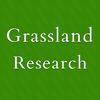博文
Grassland Research | 澳大利亚南部地中海环境下洋葱草球茎发育模式以及对刈割和施肥、化学防治的响应
||
Grassland Research | 澳大利亚南部地中海环境下洋葱草球茎发育模式以及对刈割和施肥、化学防治的响应
Grassland Research草业科学领域国际学术期刊


导读
澳大利亚南部地中海环境(炎热干旱的夏季和潮湿寒冷的冬季)非常适宜洋葱草的生长和繁殖,从而使其成为一种广泛分布于牧场且难以防控的杂草,影响了当地畜牧业生产。为解决其防控难题,需要了解洋葱草的生长、生存机制及其对刈割、施肥等草地管理措施的响应。
Nie等(2022)在温室设置了对洋葱草刈割和施肥试验,结果表明在离地1cm处持续刈割,球茎重量减少84%,中、高浓度化肥施用没有增加洋葱草的生物量。而在温室对生长模式的密切观察发现洋葱草原有球茎的重量自萌发第1周起由于为幼苗提供营养而持续下降,到第8周营养耗尽,而新的球茎自第6周开始缓慢生长。这种生长模式为控制洋葱草提供一个出苗后6-8周的最佳窗口期。洋葱草的球茎被挖出后再种植会起动休眠机制,一年后才能发芽。一小部分植物能从单个球茎中萌发3-6个新球茎。这些都提高了洋葱草的生存能力,也为防控带来了挑战。在冬季和春季喷施不同浓度的草甘膦、甲氧咪草烟、2-甲基-4-氯苯氧乙酸、百草敌、甲磺隆以筛选适用于防控洋葱草的除草剂。结果表明,冬季(约出苗后6-8周)喷施甲磺隆或甲氧咪草烟防除效果最佳。该工作明确了洋葱草的生长发育规律,为田间管理和化学防防除提供了理论支撑和实用措施,对澳大利亚南部地中海区域以及世界上类似气候地区洋葱草的防治具有重要意义。
图表
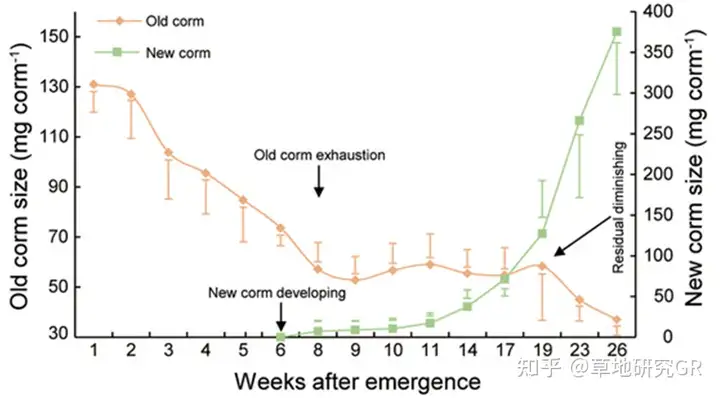
Figure 1. Change in the size (mg corm−1) of old and new corms with time after onion grass emergence (vertical bars denote the standard error of means).
Table 1. Corm weight (log 10-transformed for statistical analysis and back-transformed means in parentheses, g DM m−2) and seedpod number (log 10-transformed for statistical analysis and back-transformed means in parentheses, seedpods m−2) of OG and herbage mass (kg DM ha−1) of OG and OPS under different cutting and fertiliser regimes.
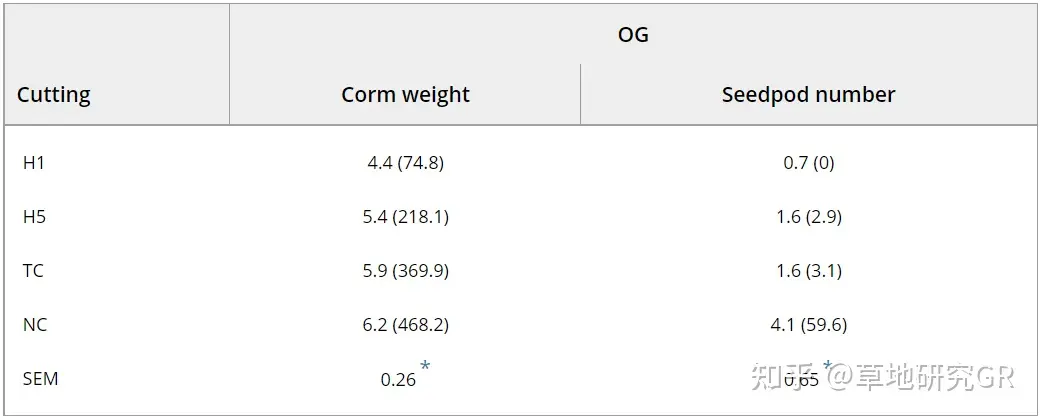
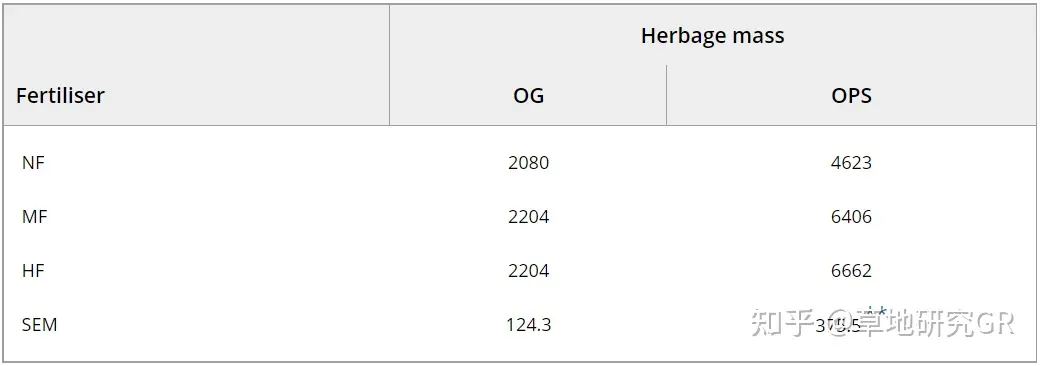
Abbreviations: H1, cut to 1 cm above ground when the plants reach 5 cm in height; H5, cut to 5 cm when the plants reach 10 cm in height; HF, high fertiliser input (equivalent to 105.45 kg P ha−1); MF, medium fertiliser input (equivalent to 52.63 kg P ha−1); NC, no cutting until onion grass completed its life cycle; NF, no fertiliser application; OG, onion grass; OPS, other plant species; SEM, standard error of means; TC, cut to 1 cm when flowering of onion grass commenced in September 2007 to prevent seed production.
* p < 0.05** p < 0.01.
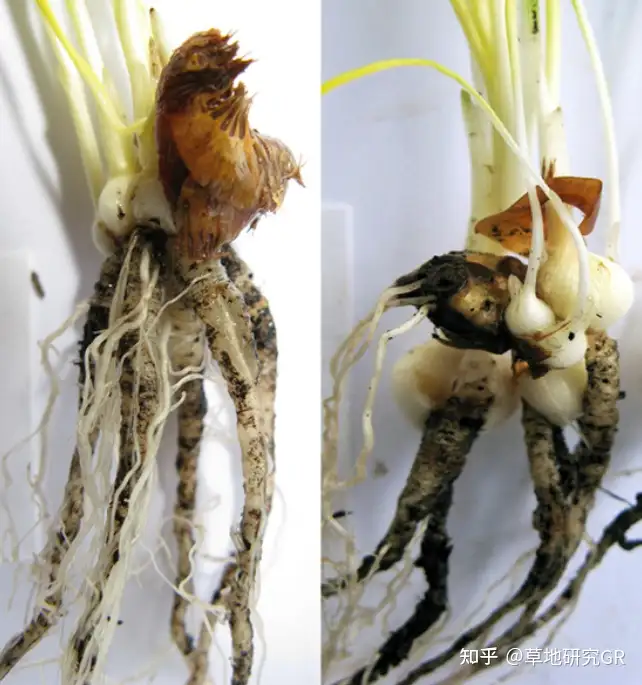
Figure 2. Development of multiple corms from single plants at 25 (left) and 28 (right) weeks after emergence.
Table 2. ODB (plants m−2) and ODA herbicide application, andPN (seedpods m−2), GCOS (score 0–5) and GCNG (score 0–5) after herbicide treatments for Phase 1 and Phase 2 experiments.
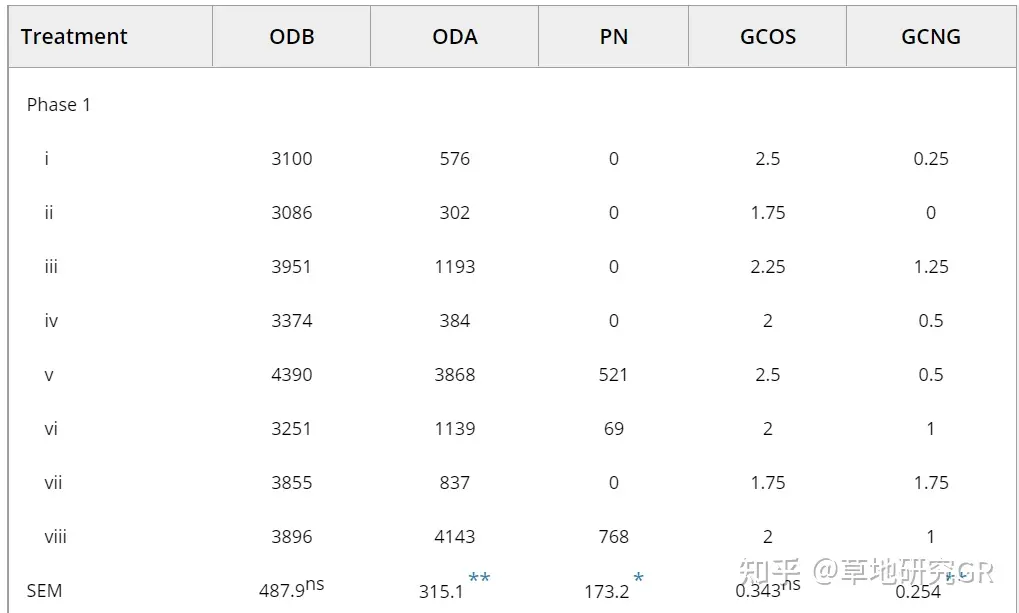
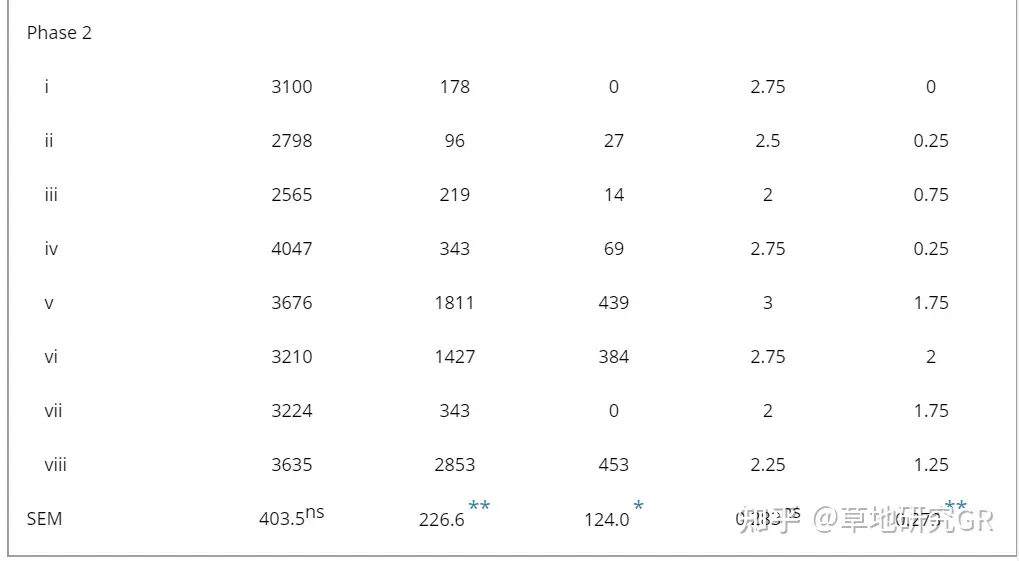
Note: (i) Glyphosate (active constituents 360 g L−1)—low rate (5 ml L−1+ 2 ml L−1surfactant); (ii) glyphosate (active constituents 360 g L−1)—high rate (10 ml L−1+2 ml L−1surfactant); (iii) Imazamox (active constituents 700 g kg−1)—low rate (0.5 g L−1+10ml L−1surfactant); (iv) Imazamox (active constituents 700 g kg−1)—high rate (1 g L−1+10ml L−1surfactant); (v) MCPA (2‐methyl‐4‐chlorophenoxyacetic acid) 500 (active constituents 500 g L−1)10−1ml L−1; (vi) Dicamba (active constituents 500 g L−1) 6 ml L−1+ 6 ml L−1surfactant; (vii) metsulfuron methyl (active constituents 600 g kg−1) 0.14 g L−1+ 1 ml L−1surfactant; (viii) water only without herbicide and surfactant. Abbreviations: GCOS, ground cover of other species; GCNG, ground cover ofnative grasses; ODA, onion grass density after; ODB, onion grass density before;PN, seedpod number; SEM, standard error of means.ns,not signficant;*p<0.05, **p<0.01.
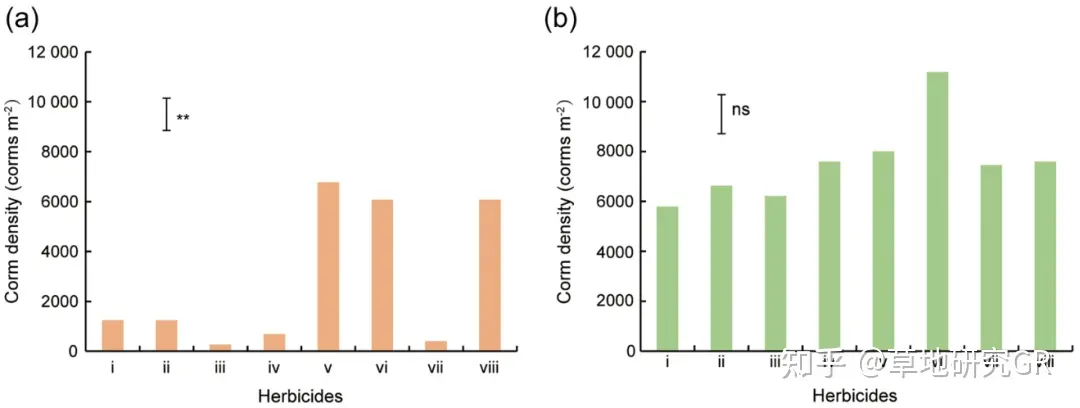
Figure 3. Corm density of onion grass in early summer (December 2008) after various herbicide treatments for (a) Phase 1 and (b) Phase 2 experiments. (i) Glyphosate (active constituents 360 g L−1)—low rate (5 ml L−1+ 2 ml L−1surfactant); (ii) glyphosate (active constituents 360 g L−1)—high rate (10 ml L−1+2 ml L−1surfactant); (iii) imazamox (active constituents 700 g kg−1)—low rate (0.5 g L−1+10 ml L−1surfactant); (iv) imazamox (active constituents 700 g kg−1)—high rate (1 g L−1+10 ml L−1surfactant); (v) MCPA (2‐methyl‐4‐chlorophenoxyacetic acid) 500 (active constituents 500 g L−1) 10 ml L−1; (vi) dicamba (active constituents 500 g L−1) 6 ml L−1+ 6 ml L−1surfactant; (vii) metsulfuron methyl (active constituents 600 g kg−1) 0.14 g L−1+1ml L−1surfactant; and (viii) water only without herbicide and surfactant. Bars denote the standard error of means; **p< 0.01; ns,not significant.

扫码查看原文
原文链接:https://onlinelibrary.wiley.com/doi/full/10.1002/glr2.12030
内容来源:Grassland Research(草地研究)Early View(投稿:2022-09-06;接收:2022-09-26;
刊发:2022-10-23)
DOI: https://doi.org/10.1002/glr2.12030
引用格式:Nie, Z., Zollinger, R., &Behrendt, R. (2022). Responses to defoliation and fertiliser, corm development and chemical control of onion grass (Romulea rosea) in the Mediterranean environment of southern Australia. Grassland Research, 1(3), 197–206.
文章信息编译者:田沛 兰州大学草地农业科技学院 教授
说明:该文仅代表编译者对论文的理解,如需参考和引用相关内容,请查阅原文。
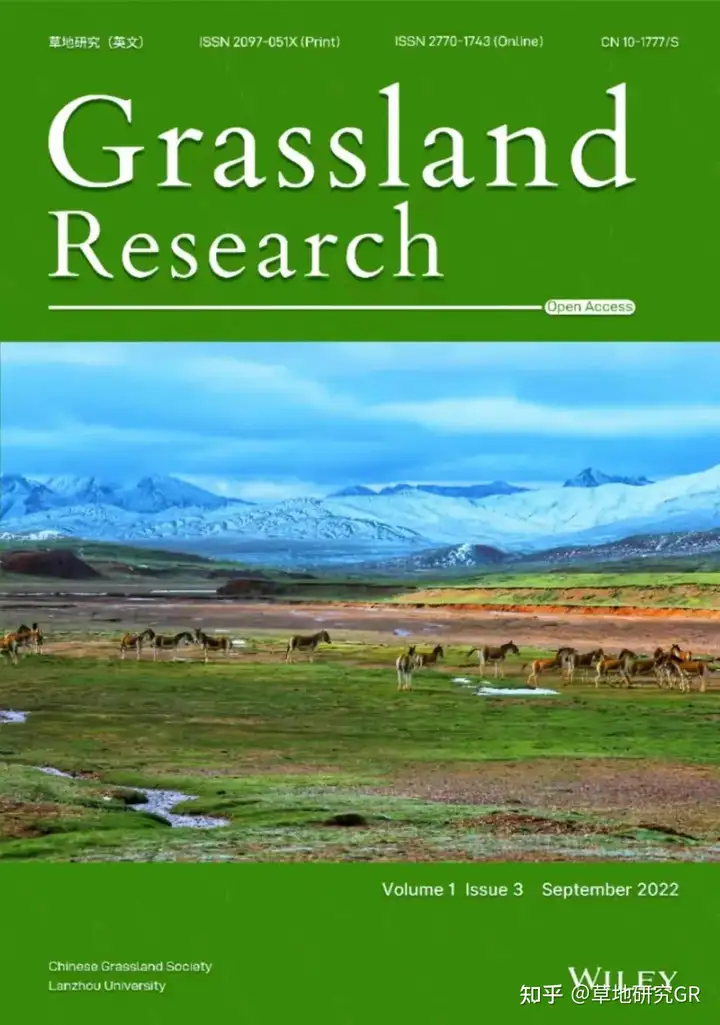
期刊介绍
Grassland Research是我国草业科学领域第一本国际学术期刊,季刊,由中国草学会和兰州大学共同主办。该刊受中国科技期刊卓越计划高起点新刊项目支持,由国际出版集团John Wiley & Sons Australia, Ltd.提供出版及宣传服务,于2022年正式出版。
Grassland Research论文刊发范围广,综合性强。从分子到全球变化层面,全维度聚焦草业科学及其在人类可持续发展中的作用。期刊将刊登天然草原,栽培草地、草坪和生物能源作物,以及草地生态系统三大板块的基础性和应用性研究成果、综述、论点等类型的文章。优先考虑发表青年学者优秀研究成果,期待成为青年科学家喜爱的国际学术交流主阵地。
在创刊前三年,Grassland Research将免收版面费,以OA形式通过全球化出版平台Wiley Online Library出版。
排版|付宸
责任编辑 | 范思佳
审核|彭京伦 武艳培 王新宇

https://blog.sciencenet.cn/blog-3568995-1402656.html
上一篇:Grassland Research | 美国大平原南部小黑麦季节性饲草产量变化趋势
下一篇:Grassland Research | 高尔夫球场氮利用效率的定量研究
